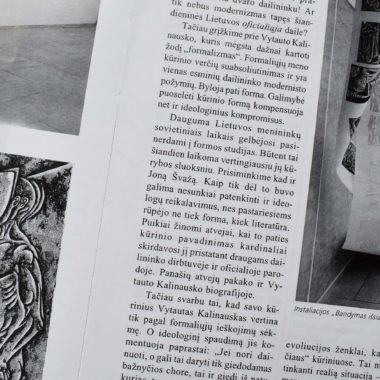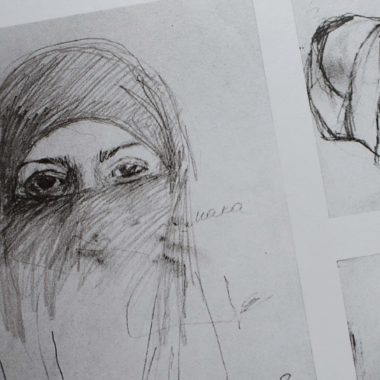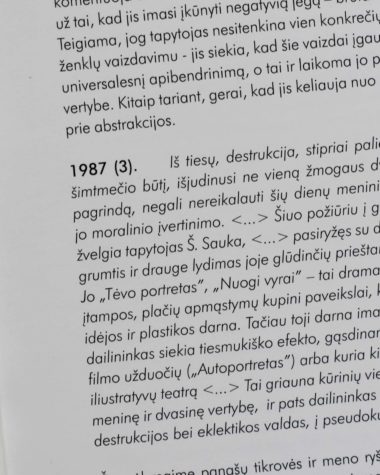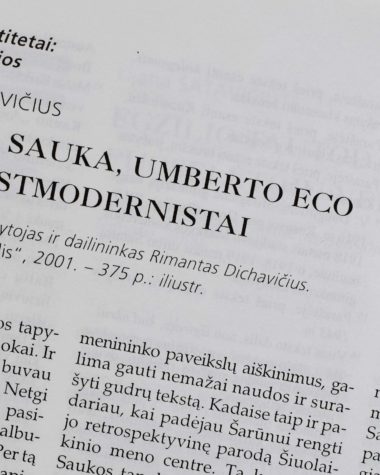1
Jansas belongs to the first generation of Lithuanian artists who make art for the city.
2
Articulation of the everyday – this is the underlying principle of his works. He attempts to find a structure for the disorganised everyday, a principle that would allow shattered bits to be gathered onto a limited number of threads.
3
A guiding principle for my work is what I would call existential romanticism (Jansas).
4
In Jansas’ recent works we encounter those who were by-passed by post-Soviet optimism, those left to poke around in the garbage-heaps. The artist seems to be asking these people for the ultimate answer about the transformations of society in the last ten years.
5
An attempt at undoing the myth of the existential hero (Jansas).
6
The new post-Soviet losers lack the romantic charm attributed to earlier bohemians. They write no poems on napkins in cafés – just wait impatiently for yet another tiring and repetitive day to be over.
7
Jansas likes to tell stories. The everyday is literary: details are moved by time in a linear fashion. From morning to evening. From the bar to your home. From the door to your bed.
8
The formal language of Jansas’ video films is opposed to the brightly coloured, sterile and orderly visuality of the TV screen, which has been the main source of aesthetic upbringing in the post-communist states.
9
The heroes of Jansas’ films dwell and act in a territory of assaulted identity. These street-dwellers are the left-overs of the eye-for-an-eye Darwinist evolution. They are the ones who flunked the social exams and were deemed unworthy of entering the rational capitalist society.
10
Jansas has increasingly distanced himself from the position of the indifferent by-stander. He is no longer just the author of his own works, but also an acting character in them.
11
The street is not only a crucially important artery, ensuring the life-functions of the city. In the language spoken by Jansas’ works, the street means everything that is opposed to the classical notion of Home.
12
Jansas’ works are enacted between individual and general definitions of Happiness.
>>
Skelbta: Rotor, Association for Contemporary Art, Edition Selene, Vienna, 2001.








